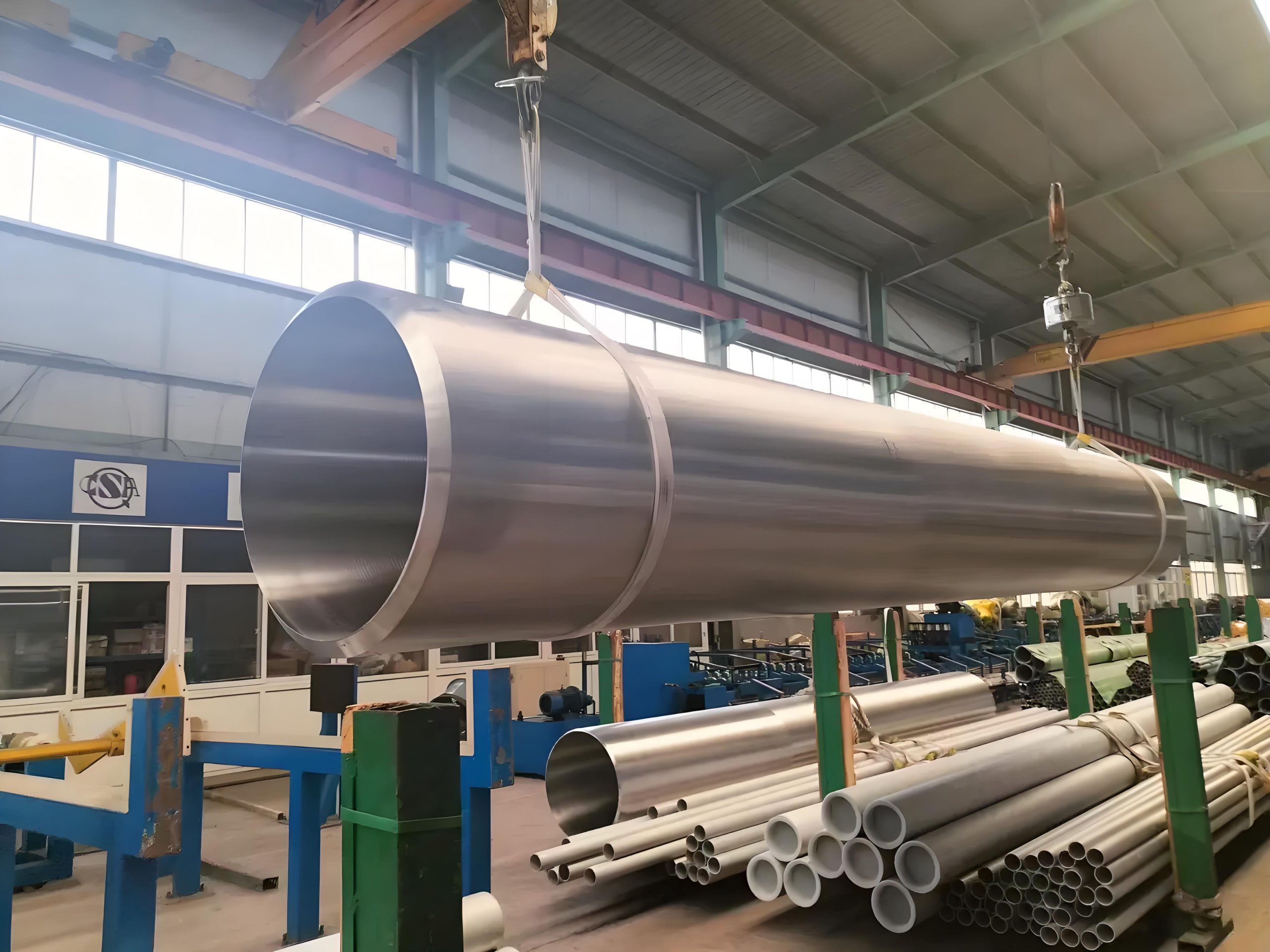
Incoloy 825 UNS N08825 Seamless Nickel Alloy Pipe W.Nr 2.4858: Properties, Applications, and Market Insights
Incoloy 825 (UNS N08825, W.Nr 2.4858) is a nickel-iron-chromium alloy with additions of molybdenum, copper, and titanium, designed for exceptional corrosion resistance in both oxidizing and reducing environments. Seamless Incoloy 825 pipes, compliant with ASTM B423, are widely used in chemical processing, oil and gas, and feed additive production due to their resistance to pitting, crevice corrosion, and stress-corrosion cracking. In facilities producing feed additives like chicken liver powder and choline chloride, Incoloy 825 pipes withstand corrosive acids and high temperatures, enhancing equipment durability. The global market for Incoloy 825 seamless pipes is projected to grow at a CAGR of 5.5% from 2025 to 2032, driven by demand in energy and chemical sectors. This report examines the material properties, manufacturing processes, applications, and market trends of Incoloy 825 seamless pipes, highlighting their role in harsh environments and synergy with feed additive industries. Challenges include raw material price volatility, but opportunities lie in sustainable manufacturing and expanding industrial applications.
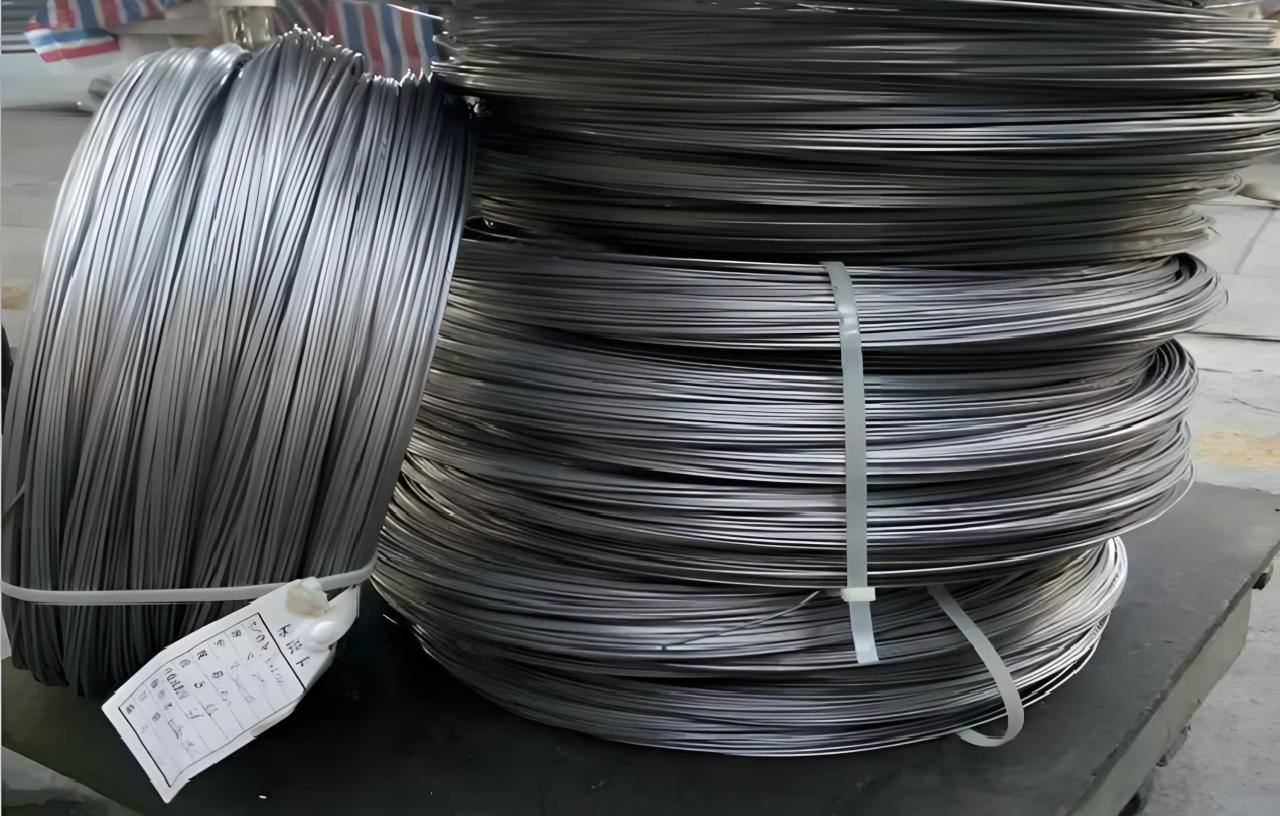
1. Introduction
Incoloy 825 (UNS N08825, W.Nr 2.4858) is an austenitic nickel-iron-chromium alloy with additions of molybdenum (2.5–3.5%), copper (1.5–3.0%), and titanium (0.6–1.2%), engineered for superior corrosion resistance in aggressive environments. Seamless Incoloy 825 pipes, specified under ASTM B423, are critical in industries such as chemical processing, oil and gas, and feed additive production, where equipment must endure sulfuric, phosphoric, and nitric acids, as well as high temperatures up to 1000°F (540°C). In feed additive facilities, these pipes are used in process piping and heat exchangers for producing chicken liver powder and choline chloride, resisting corrosive gases like hydrogen sulfide. The alloy’s high nickel content (38–46%) ensures resistance to chloride stress-corrosion cracking, while molybdenum and copper enhance pitting resistance in aqueous environments. The global market for Incoloy 825 seamless pipes is expected to grow at a CAGR of 5.5% from 2025 to 2032, driven by demand in energy and chemical sectors. This report provides a comprehensive analysis of the properties, manufacturing processes, applications, and market dynamics of Incoloy 825 seamless pipes, emphasizing their role in feed additive production and other high-performance applications, offering insights for manufacturers and engineers.
2. Material Properties
2.1 Chemical Composition and Mechanical Properties
Incoloy 825 (UNS N08825, W.Nr 2.4858) is a nickel-iron-chromium alloy with a composition optimized for corrosion resistance and mechanical strength. It contains 38.0–46.0% nickel, 19.5–23.5% chromium, 22.0% minimum iron, 2.5–3.5% molybdenum, 1.5–3.0% copper, and 0.6–1.2% titanium, with a maximum carbon content of 0.05%. The nickel content ensures resistance to chloride stress-corrosion cracking, while molybdenum and copper enhance pitting and crevice corrosion resistance in reducing environments like sulfuric acid. Titanium stabilizes the alloy against intergranular corrosion by preventing sensitization. Table 1 outlines the chemical composition. Mechanically, Incoloy 825 seamless pipes offer a minimum tensile strength of 85 ksi (586 MPa), yield strength of 35 ksi (241 MPa), and 30% elongation, per ASTM B423. The alloy maintains good mechanical properties from cryogenic temperatures to 1000°F (540°C), with a hot-working range of 1600–2150°F (870–1180°C). In feed additive production, Incoloy 825 pipes withstand acidic conditions during choline chloride synthesis, ensuring a 20–30% longer lifespan than stainless steel. These properties make Incoloy 825 a reliable choice for seamless pipes in corrosive and high-temperature applications.[](https://www.octalsteel.com/resources/incoloy-825-nickel-alloy-825-uns-n08825-pipe/)[](https://www.fushunsteeltube.com/product-item/incoloy-825-uns-n08825-2-4858-nicr21mo-nickel-based-alloy-pipe-tube/)
| Element | Content (%) |
|---|---|
| Nickel (Ni) | 38.0–46.0 |
| Chromium (Cr) | 19.5–23.5 |
| Iron (Fe) | 22.0 min |
| Molybdenum (Mo) | 2.5–3.5 |
| Copper (Cu) | 1.5–3.0 |
| Titanium (Ti) | 0.6–1.2 |
| Carbon (C) | ≤0.05 |
| Manganese (Mn) | ≤1.0 |
| Silicon (Si) | ≤0.5 |
| Aluminum (Al) | ≤0.2 |
Source: ASTM B423, ASTM B424
2.2 Corrosion and High-Temperature Resistance
Incoloy 825 seamless pipes exhibit exceptional resistance to corrosion in both oxidizing and reducing environments, making them ideal for harsh industrial applications. The high nickel content (38–46%) provides immunity to chloride stress-corrosion cracking, while molybdenum (2.5–3.5%) and copper (1.5–3.0%) enhance resistance to pitting and crevice corrosion in chloride-rich media, such as seawater and brine. Chromium (19.5–23.5%) forms a protective oxide layer, conferring resistance to oxidizing acids like nitric acid and nitrates. Titanium (0.6–1.2%) stabilizes the alloy against intergranular corrosion by preventing sensitization during welding or high-temperature exposure. Incoloy 825 excels in sulfuric and phosphoric acid environments, with corrosion rates as low as 0.02 mm/year in 20% H3PO4 at 85°C and 0.15 mm/year in 53% H3PO4 at 120°C. In feed additive production, these pipes resist corrosive gases like sulfur-containing flue gases during chicken liver powder processing, extending equipment life by 20–30%. The alloy maintains structural integrity up to 1000°F (540°C), with good weldability via gas tungsten arc, gas metal arc, and shielded metal arc processes, requiring no post-weld heat treatment. These properties ensure Incoloy 825 seamless pipes are reliable in demanding applications.[]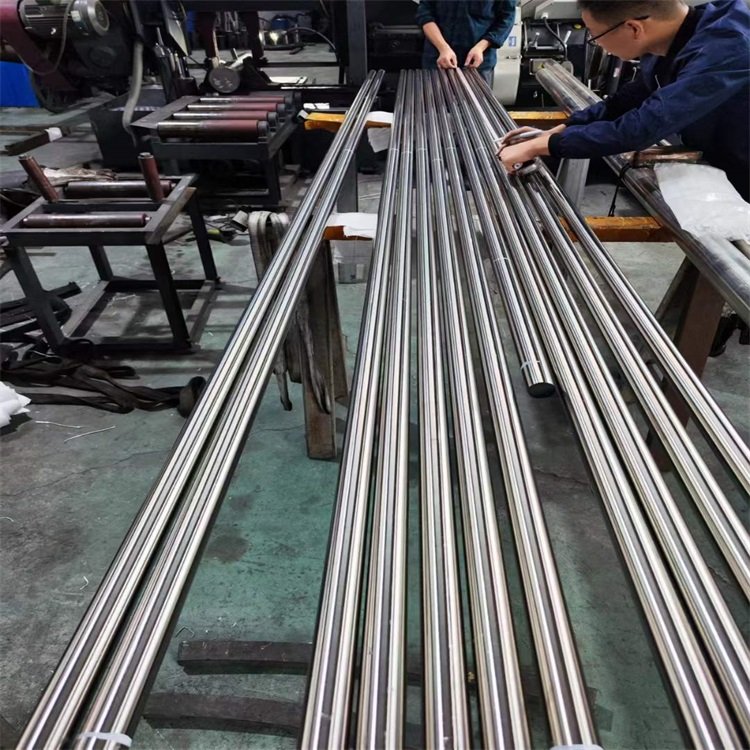
3. Manufacturing Processes
3.1 Seamless Pipe Production
Seamless Incoloy 825 pipes (ASTM B423) are manufactured using advanced metallurgical processes to ensure high quality and performance. The process begins with hot extrusion of nickel alloy billets at 1600–2150°F (870–1180°C), followed by cold working to achieve precise dimensions (1/2” to 16” OD, SCH 10 to SCH 160 wall thickness). Solution annealing at 940–980°C, followed by rapid air cooling or quenching for heavier sections, optimizes the austenitic microstructure and prevents sensitization, ensuring maximum corrosion resistance. Quality control includes hydrostatic or nondestructive eddy-current testing to detect defects, as well as positive material identification (PMI) to verify chemical composition. Pipes are tested for tensile strength (≥586 MPa), yield strength (≥241 MPa), and elongation (≥30%), per ASTM B423. In feed additive production, seamless Incoloy 825 pipes are used in heat exchangers and process piping for choline chloride synthesis, where uniform wall thickness and high dimensional accuracy ensure reliability under high-pressure and corrosive conditions. The manufacturing process supports customized lengths (up to 12 meters) and meets standards like ASME SB 423 and ISO 6207, making Incoloy 825 seamless pipes suitable for critical applications.[]
| Process | Parameter |
|---|---|
| Hot Extrusion | 1600–2150°F (870–1180°C) |
| Annealing | 940–980°C, air cool or quench |
| Testing | Hydrostatic or eddy-current, PMI |
| Dimensions | 1/2”–16” OD, SCH 10–160 |
| Length | Up to 12 meters |
Source: ASTM B423, ASME SB 423
3.2 Quality Assurance and Testing
The production of Incoloy 825 seamless pipes involves rigorous quality assurance to ensure compliance with industry standards and performance in corrosive environments. Each pipe undergoes visual inspection, PMI testing, and mechanical property evaluation (tensile, yield, elongation) to meet ASTM B423 requirements. Non-destructive testing, such as eddy-current or ultrasonic testing, detects surface and subsurface defects, while hydrostatic testing ensures pressure integrity. Intergranular corrosion tests (e.g., ASTM A262) verify resistance to sensitization, critical for applications in feed additive production involving acidic media like phosphoric acid used in choline chloride processing. Pipes are also tested for pitting and crevice corrosion resistance in chloride-rich environments, achieving corrosion rates below 0.79 mm/year in 50–55% H3PO4 at 125°C. Incoloy 825’s weldability, using filler metals like AWS A5.14 ERNiCrMo-3, ensures strong welds without post-weld heat treatment, maintaining corrosion resistance. Certified to ASME SB 423, DIN 17751, and VdTÜV 432, these pipes are bundled (up to 3” OD) or supplied loose (over 3” OD) with protective coatings to prevent rust during transport. These processes ensure Incoloy 825 seamless pipes meet the stringent demands of chemical and feed processing industries.[]
4. Applications
Incoloy 825 seamless pipes (UNS N08825, W.Nr 2.4858) are critical in industries requiring corrosion resistance and high-temperature performance. In feed additive production, they are used in heat exchangers and process piping for drying chicken liver powder and synthesizing choline chloride, resisting corrosive acids and sulfur-containing flue gases. In chemical processing, Incoloy 825 pipes handle sulfuric, phosphoric, and nitric acids, with corrosion rates as low as 0.02 mm/year in 20% H3PO4 at 85°C. The oil and gas industry employs these pipes in offshore and onshore applications, including sour gas wells and acid gas injection systems, due to their resistance to H2S and chloride-induced corrosion. In nuclear fuel reprocessing, Incoloy 825 pipes are used in storage tanks and piping systems handling radioactive materials. Pollution control systems utilize these pipes in wet scrubbers to remove harmful emissions, while marine applications benefit from their resistance to seawater and brine. Table 3 lists key applications. The alloy’s durability reduces maintenance costs by 20–30% in feed additive plants, ensuring compliance with ASTM B423 and ASME BPVC standards for high-pressure systems.[]
| Industry | Application |
|---|---|
| Feed Additives | Heat exchangers, choline chloride piping |
| Chemical Processing | Sulfuric/phosphoric acid piping, reactors |
| Oil and Gas | Sour gas wells, acid gas injection |
| Nuclear | Fuel reprocessing, storage tanks |
| Pollution Control | Wet scrubbers, emission control |
| Marine | Seawater piping, exhaust systems |
5. Market Trends and Insights
The global market for Incoloy 825 seamless pipes is projected to grow at a CAGR of 5.5% from 2025 to 2032, reaching USD 1.3 billion, driven by demand in chemical processing, oil and gas, and feed additive industries. The Asia-Pacific region, particularly China and India, holds a 48% market share, fueled by expanding chemical and livestock feed production, including chicken liver powder and choline chloride. North America and Europe, with 24% and 20% shares, benefit from advanced energy sectors and stringent quality standards. Seamless pipes dominate, accounting for 65% of the market, due to their high-pressure capabilities. Innovations in sustainable manufacturing, such as energy-efficient melting and nickel alloy recycling, reduce production costs by 10–15%. Challenges include raw material price volatility (nickel, molybdenum) and competition from stainless steels, which may limit growth in cost-sensitive applications. Opportunities lie in expanding applications in renewable energy (e.g., geothermal plants) and feed processing equipment, where Incoloy 825’s corrosion resistance enhances equipment lifespan by 20–30%. Strategic R&D and regional market penetration will drive growth, aligning with global industrial and sustainability trends.[](
6. Comparative Analysis with Other Alloys
Incoloy 825 seamless pipes offer distinct advantages over alloys like Incoloy 800, Inconel 625, and stainless steel 316. Compared to Incoloy 800 (30–35% Ni, 19–23% Cr), Incoloy 825 (38–46% Ni, 19.5–23.5% Cr) provides superior resistance to aqueous corrosion due to molybdenum (2.5–3.5%) and copper (1.5–3.0%), making it ideal for feed additive processing involving sulfuric and phosphoric acids. Inconel 625 (58% Ni min, 20–23% Cr) offers better corrosion resistance in highly acidic environments but is costlier (USD 50–60/kg vs. USD 35–40/kg for Incoloy 825), limiting its use in budget-sensitive applications. Stainless steel 316 (10–14% Ni, 16–18% Cr) is less resistant to pitting and stress-corrosion cracking, with a maximum service temperature of 800°F (427°C) compared to Incoloy 825’s 1000°F (540°C). Table 4 compares these alloys. Incoloy 825’s balance of cost, corrosion resistance, and mechanical strength makes it a preferred choice for seamless pipes in feed additive production and chemical processing.[](
| Alloy | Nickel (%) | Chromium (%) | Temp. Resistance (°F) | Cost (USD/kg) |
|---|---|---|---|---|
| Incoloy 825 | 38–46 | 19.5–23.5 | Up to 1000 | 35–40 |
| Incoloy 800 | 30–35 | 19–23 | Up to 1500 | 30–35 |
| Inconel 625 | 58 min | 20–23 | Up to 1800 | 50–60 |
| Stainless Steel 316 | 10–14 | 16–18 | Up to 800 | 10–15 |
Incoloy 825 seamless pipes (UNS N08825, W.Nr 2.4858) are critical for applications requiring exceptional corrosion resistance and high-temperature performance, offering superior resistance to pitting, crevice corrosion, and stress-corrosion cracking. Their composition, with 38–46% nickel, 19.5–23.5% chromium, and additions of molybdenum, copper, and titanium, ensures durability in feed additive production, such as heat exchangers for chicken liver powder and piping for choline chloride, reducing maintenance costs by 20–30%. The global market, projected to grow at a CAGR of 5.5% to USD 1.3 billion by 2032, is driven by demand in chemical processing, oil and gas, and feed industries. Innovations in sustainable manufacturing and applications in renewable energy offer growth opportunities, despite challenges like raw material price volatility. Manufacturers can leverage Incoloy 825’s properties to develop reliable equipment, meeting the demands of modern industrial and feed additive applications. For further inquiries or customized solutions, please contact us at [insert contact details]. Incoloy 825 seamless pipes remain a cornerstone for high-performance industrial solutions, with strong market potential in 2025 and beyond.

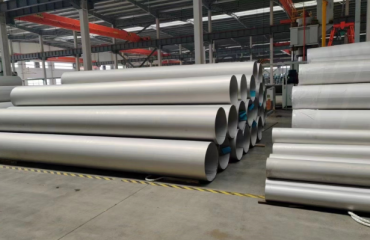
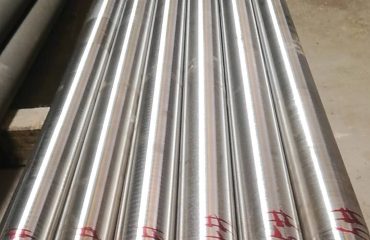
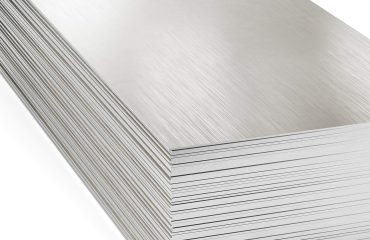
You must be logged in to post a comment.